May 2, 2023
The Impact of Generative AI in Real Estate

In 2017, a landmark paper by Google Research introduced a new deep learning architecture for natural language understanding called the “Transformer”. This new approach possessed the capacity to produce language models of exceptional quality, alongside the added advantage of being highly scalable and requiring significantly less time for training. The public release of this research and Google’s first BERT model started a race to build even larger and more powerful language models.
In 2020, OpenAI unveiled GPT-3, the successor to their previous language model, GPT-2. Boasting an unprecedented size, GPT-3 was 10 times larger than any existing model, with a colossal 175 billion parameters trained on a dataset of almost a trillion words. Although primarily intended to predict the next word in a sequence, the GPT-3 model exhibited "emergent abilities" beyond its training, displaying new skills such as translation, entity recognition, summarization, arithmetic computations, code generation, and more due to its size.
In 2022, the generative AI landscape began to form as commercial access to the models became available and new techniques introduced applications for image generation, code generation, protein sequencing, and more. Large language models will continue to enable new waves of research, creativity, and productivity by facilitating the generation of complex solutions for some of the world's most challenging problems, across a broad range of industries and enterprises.
How will this impact the real estate industry?
As the performance, speed, and affordability of AI models continue to improve, and model access becomes more accessible via free and open source platforms, the stage is set for an unprecedented surge of creativity and innovation resulting in add-on features to existing products and an explosion of new companies building generative AI applications for specific verticals.
While there are numerous AI models available and new ones emerging, the most valuable for the real estate industry in the near term are text and image models.
These models have numerous applications in the real estate industry. They will unlock dramatic improvements not only in the speed and efficiency of employees, but will also enable new levels of creativity and capability in their work.
What tasks can text models do?
- Generation - produce high-quality and coherent text that mimics human language.
- Summarization - create a shorter version of a given text that retains its most important information.
- Rewriting - rephrasing, restructuring, or translating a given text to create a new version that is more concise, more readable, or more suitable for a particular audience or purpose.
- Extraction - identify and extract specific information or valuable insights from large amounts of unstructured data in a structured and organized manner.
- Search/Similarity - quickly and accurately find the desired information without knowing the exact words or phrases to use.
- Clustering - grouping together similar items or entities from a given set of text data to understand their relationships and connections.
- Classification - categorizing text data into pre-defined labels or categories based on its content, such as topic, sentiment, or language.
What tasks can image models do?
- Generation - produce high-quality photos, illustrations, 3D renderings, etc. at the level of design professionals.
- Restoration - restore degraded or low-quality images, such as removing noise or artifacts from images.
- Inpainting - fill in missing parts of an image, such as removing an object from an image and filling in the background.
- Super-resolution - increase the resolution of low-resolution images, generating high-quality images with more detail.
- Image synthesis - synthesize images with specific properties, such as generating images of homes with different colors or styles.
- Object detection - detect objects in images and classify them, such as identifying different types of floor plans, the presence of specific amenities, or property damage.
Marketing Applications
Generative AI models are valuable across a number of business functions, but marketing applications are perhaps the most common. One of the most significant benefits is the ability to create high-quality, engaging content at scale. For example, generative AI can be used to automatically generate property descriptions, virtual home tours, and even 3D floor plans. This saves real estate agents and marketers a significant amount of time and resources, while also providing potential buyers with more immersive and interactive experiences.
Let’s start with the applications for text generation. Tools like Jasper.ai, a marketing-focused product for AI-generated content, can produce blogs, social media posts, web copy, sales emails, ads, and other types of customer-facing content. The early adopters in the real estate industry are already using these tools to accomplish their work in a fraction of the time it would normally take to write this content. However, it’s not just the time saved, it’s also the fact that new agents and property managers can easily produce high-quality and more accurate content about their properties which can be difficult to do manually without significant effort and experience.
- Automated content creation: automatically generate property descriptions, blog posts, and social media posts saving real estate agents and marketers a significant amount of time and resources, while still providing potential buyers with informative and engaging content.
Example: Utilizing ChatGPT to create a listing.
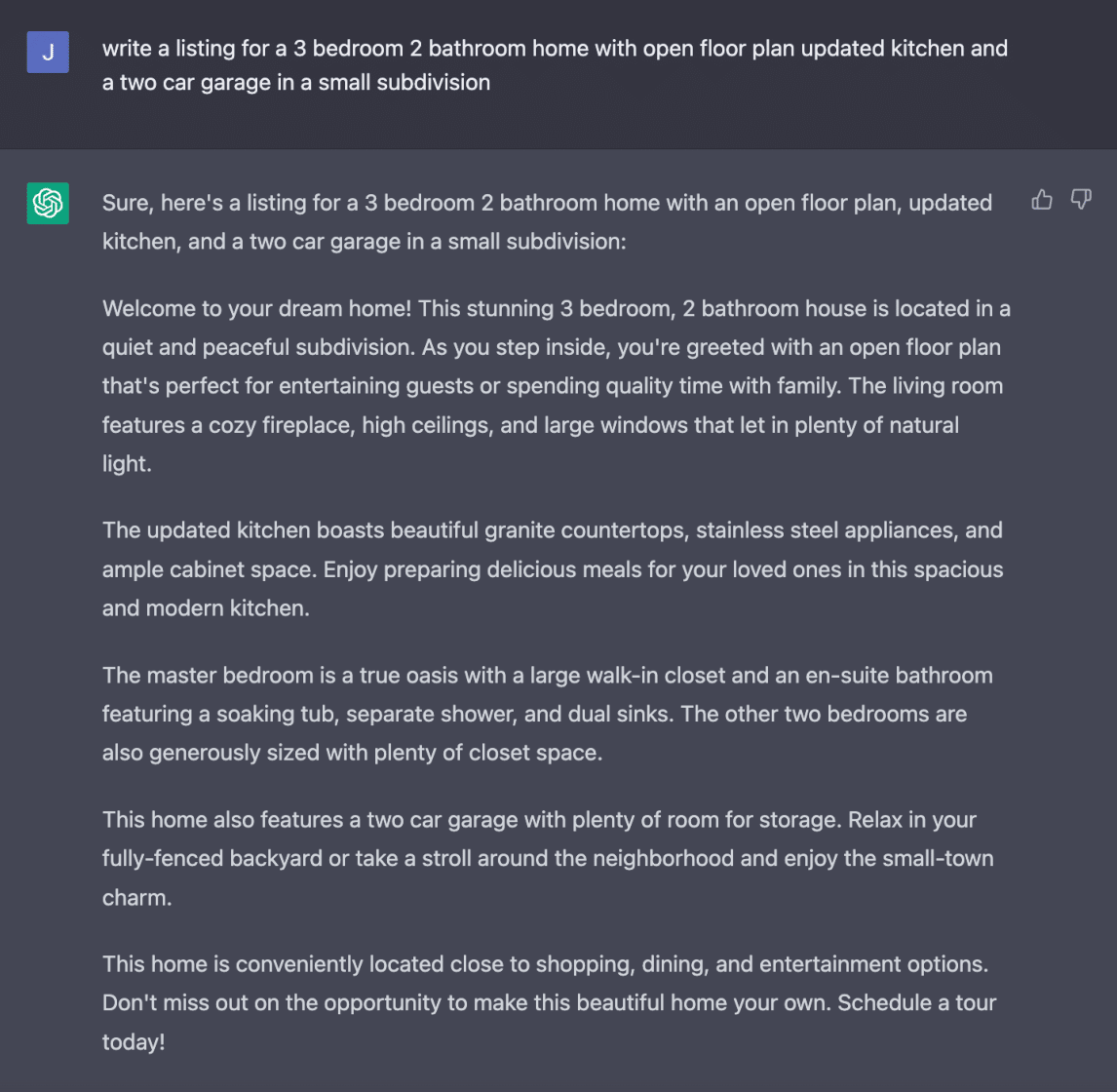
- Personalized content: create personalized content for potential buyers, such as emails or property descriptions that are tailored to their preferences and search behavior to help buyers feel more engaged and interested in the properties being presented to them.
- Market analysis: analyze data on property and market trends, and then create informative and persuasive content that speaks to those trends to create more accurate and informative content that resonates with potential buyers.
- Multilingual content: create content in multiple languages, which can be useful for real estate agents and marketers working in diverse markets or with international buyers.
So as you can see, automated text generation will have a huge impact, but there’s more.
Generative AI image models can also play an incredibly valuable role in automating expensive and time-consuming tasks involved in selling and building a property.
Here are a few examples:
- Virtual staging: create images of empty or unfurnished properties with furniture and decor that looks real. This helps potential buyers visualize how a space could look with different furnishings and decor, to make it more compelling than just showing an empty space. It's also much cheaper and faster than traditional staging.
- Photo editing: automatically enhance photos of properties, such as brightening the image, removing objects, or adding filters. This can make photos more attractive and professional-looking, which can help them stand out on listing sites and social media.
Example: Using Autoenhance.ai Sky Replacement feature

Example: Using Stable Diffusion + ControlNet with a photo of a home and a prompt for “light gray two-story house with dark shutters, a green lawn, and landscaping along the front”

- Materials & Finishes: Image generation can be used to create realistic simulations of different materials and finishes, allowing interior designers to experiment with different combinations and see how they look in a space. This can help create a cohesive and attractive design,
Example: Using Stable Diffusion + ControlNet with a photo of a kitchen and a prompt for “modern kitchen with white marble countertops”

- Virtual property tours: create virtual tours of properties before they are built. This can help architects and real estate developers showcase their designs to potential clients and investors, and provide a more immersive and interactive experience than traditional 2D blueprints or renderings.
- Design visualization: create realistic 3D visualizations of architectural designs. This can help architects and developers better visualize the final product, make design decisions, and communicate their ideas to clients and stakeholders.
- Space Planning: 2D and 3D image generation can be used to create interactive design tools that allow users to create or manipulate floor plans and space layouts in real-time. This can help architects and planners experiment with different designs and configurations, leading to more innovative and efficient use of space.
Example: Maket.ai
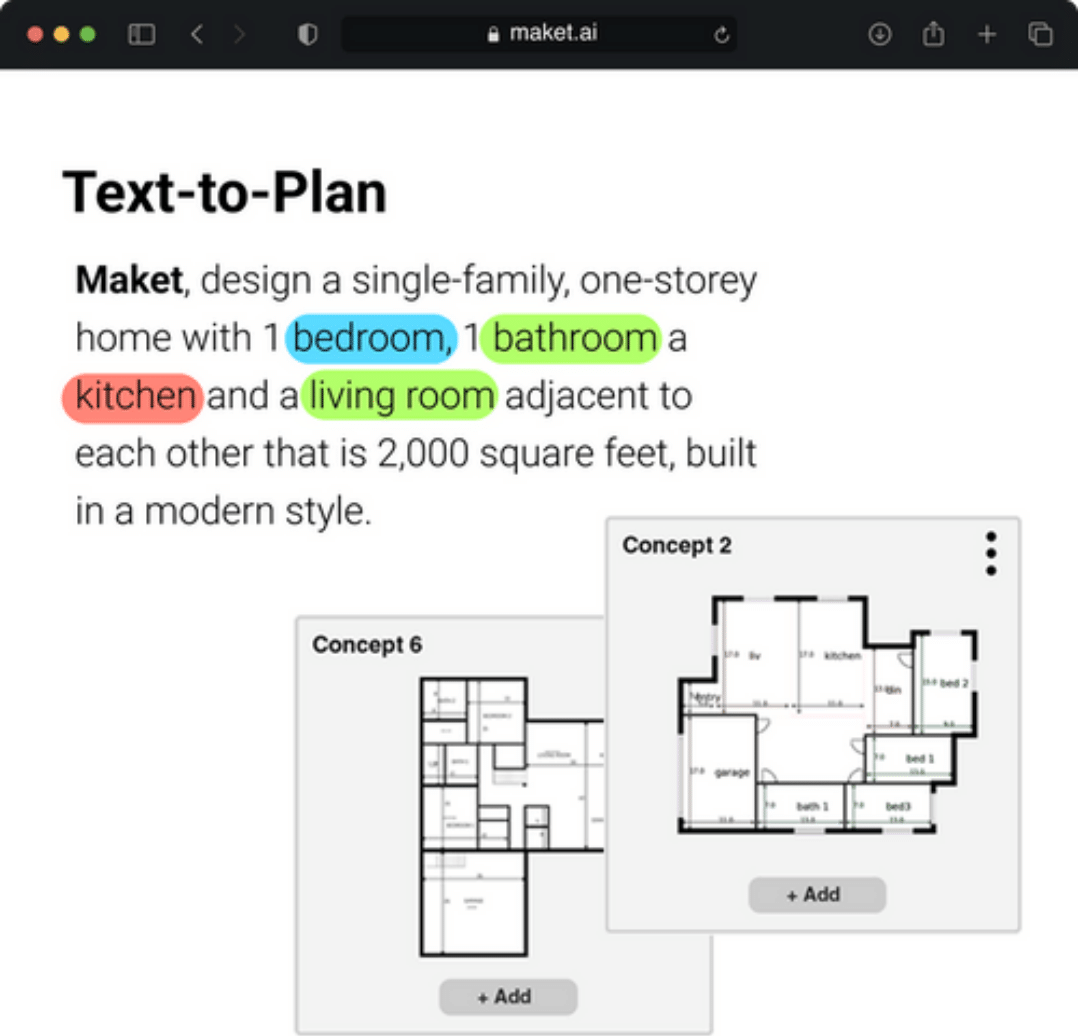
Example: Hypar.io Space
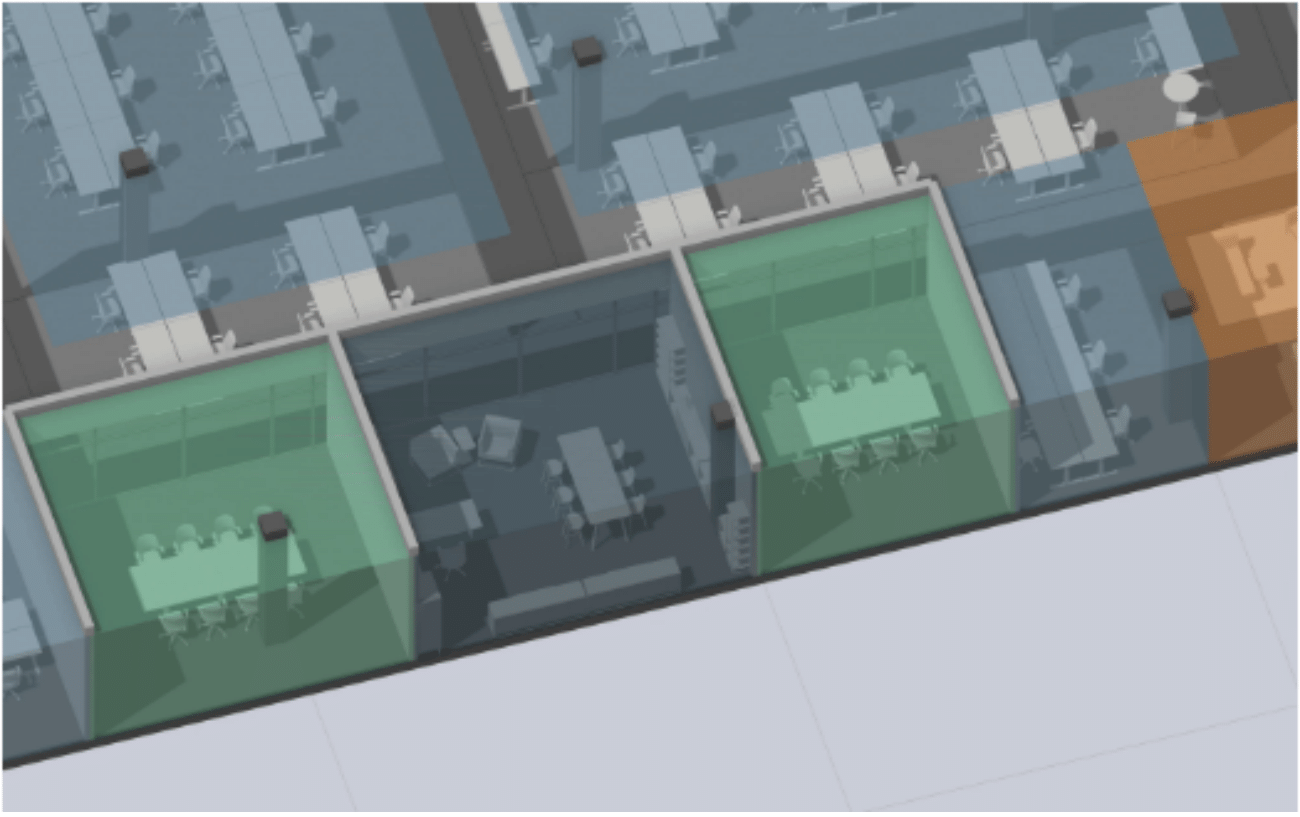
- Building systems: 3D image generation can be used to create detailed 3D models of building systems, allowing engineers and architects to visualize and plan systems more effectively. This can help identify potential issues and optimize system design before construction begins.
- Personalized content: create personalized content for potential buyers, such as virtual tours or images that show what a property would look like with different paint colors or furniture. This can help buyers imagine themselves in the space and make more informed decisions about whether a property is a good fit for them.
Conversational Applications
Chatbots and virtual assistants aren’t new, but the new large language models are increasingly being used at the core of conversational AI or chatbots. They offer greater levels of understanding of conversation and context awareness than current conversational technologies to provide a much more engaging and valuable experience.
Here are a few examples of the benefits we’ll see:
- Improved sales process: Chatbots and virtual assistants can be programmed to answer common questions from potential buyers or renters, such as property details, pricing, and availability. This can free up a real estate agent's time to focus on more complex issues and provide a more efficient and personalized experience for clients.
- Lead generation: Chatbots can be used to qualify leads by asking a series of questions to potential buyers or renters. This can help agents prioritize which leads to follow up with first and ensure that they're only spending time on qualified leads.
- Rent Payment: Conversational AI can help renters pay their rent online, set up automatic payments, and get reminders when rent is due. This can make rent payments more convenient and easier to manage.
- Maintenance requests: Renters can use chatbots or virtual assistants to report maintenance issues or request repairs. This can help them get faster and more efficient service, and ensure that maintenance issues are addressed in a timely manner.
- 24/7 availability: Virtual assistants can be available to answer questions and provide support to clients at any time of day, even outside of normal business hours. This can be especially helpful for international clients or clients in different time zones.
- Property recommendations: Chatbots can recommend properties to potential buyers or renters based on their preferences, budget, and location. This can help clients narrow down their search and find properties that meet their specific needs.
- Mortgage or Insurance recommendations: While search tools already exist to help prospective buyers find the best mortgage or insurance options for their needs, virtual assistants will evolve to provide a better and more personalized user experience to help the user navigate the entire process from start to finish.
- Data collection: Conversational AI can collect data on customer preferences, behavior, and feedback, which can help agents and brokers make better decisions and improve their marketing and customer service strategies.
Search Applications
Large Language Models have made “semantic search” possible at scale and have many applications in the real estate industry. Semantic search enables users to search for information based on the meaning of the search query, rather than just keywords. This is accomplished by storing a numerical representation of a word or phrase called an “embedding” in a database, and any search query embedding can be compared to the stored embeddings to find similar words or phrases.
Take real estate property search as an example. Traditionally, property search engines rely on simple keyword matching, which can be limiting and imprecise. With semantic search, however, users can search for properties based on a wide range of criteria, such as location, size, price, and specific features or amenities. For example, a user could search for "3-bedroom apartment with a pool in downtown New York," and the search engine would return results that match those criteria, even if they don't include the exact words in the search query.
Another application of semantic search in real estate is content curation. Real estate companies generate a vast amount of content, such as property descriptions, blog posts, and marketing materials, that can be challenging to organize and retrieve. With semantic search, companies can create a more efficient and user-friendly content management system, where users can search for specific topics or keywords and retrieve relevant content, even if the exact words are not used in the search query.
Furthermore, semantic search can be used to enhance the accuracy and relevance of property valuation. Valuing a property accurately requires considering a range of factors, such as location, size, condition, and market trends. With semantic search, real estate professionals can access a wealth of data and insights, such as property history, market data, and comparable sales, to arrive at a more accurate valuation. This can help to improve decision-making and reduce the risk of over- or undervaluing properties.
Semantic search using embeddings and LLMs has the potential to transform the real estate industry by enabling more accurate, efficient, and user-friendly information retrieval. By leveraging semantic search, real estate companies can provide a more personalized and targeted experience for their customers, enhance the accuracy and relevance of property valuations, and streamline their content management and curation processes. As the technology continues to evolve, we can expect to see more innovative and impactful applications of semantic search in real estate and beyond.
Summary
The generative AI market in the US is expected to reach over $110B by 2032, and the adoption of generative AI technology will occur faster than cloud computing, and smartphone adoption and significantly impact every industry including real estate. It's amazing to see the rapid evolution and development of these technologies, and we can expect even more exciting use cases to emerge in the near future. New AI tools will allow professionals across the entire real estate ecosystem to offer more personalized and efficient experiences to their clients, while also streamlining their own workflows. As we look forward to the future, we can only imagine what new possibilities and innovations will arise from these groundbreaking technologies.
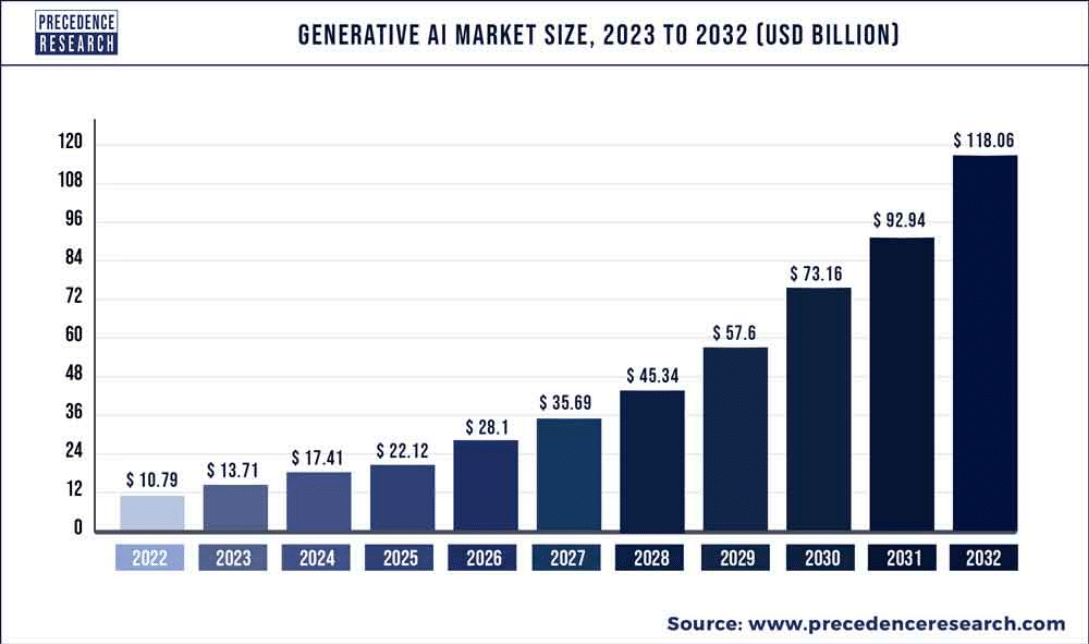
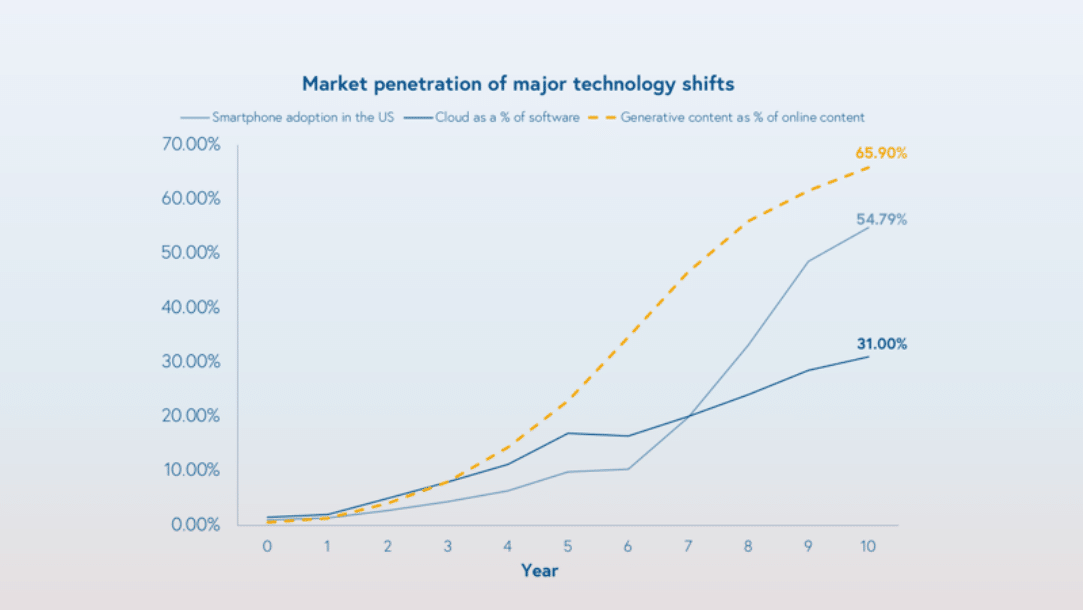
Tagged: blog, startups, vc fund, venture capital
